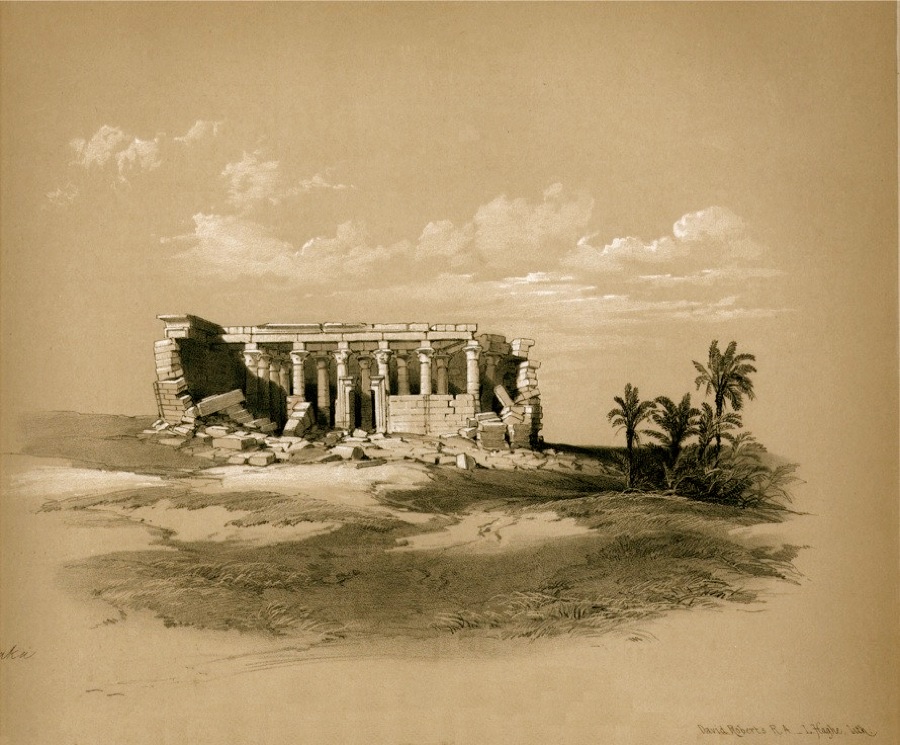RUINS OF MAHARRAKA, NUBIA.
THE Hierasycaminon of many ancient writers. The Temple is an hypæthral structure, an oblong form surrounded by a colonnade. Of the sixteen original columns fourteen remain standing. The capitals are only roughly hewn; this, and the almost entire absence of sculpture, are evidence of its having been left, in common with nearly all the Nubian Temples, unfinished. Though small, it is beautiful in form, but is in so disjointed a state that its having held together so long is surprising, especially as there seems to have been no mortar employed in the building, the stones having having been apparently secured by some sort of clamp that has decayed. On one of the walls is a rude representation of Isis seated under the sacred fig-tree, and there are other figures of the Roman period, of the time of the Cæsars. A Greek exvoto on one of the columns shews that the Temple was dedicated to Isis and Serapis.
It has been used, like most of the Temples in Nubia, as a place of worship by the early Christians, before their conversion or expulsion by the Mahommedans. The Temple dates only from the lowest period of the Ptolemies and Cæsars.
Within a few paces to the eastward there appear the remains of a wall and traces of another Temple; there are vestiges, too, of the ancient town, but now so much concealed by the sand, which almost approaches the water’s edge, that it cannot be distinctly defined.
Wilkinson’s Egypt and Thebes Roberts’s Journal.


